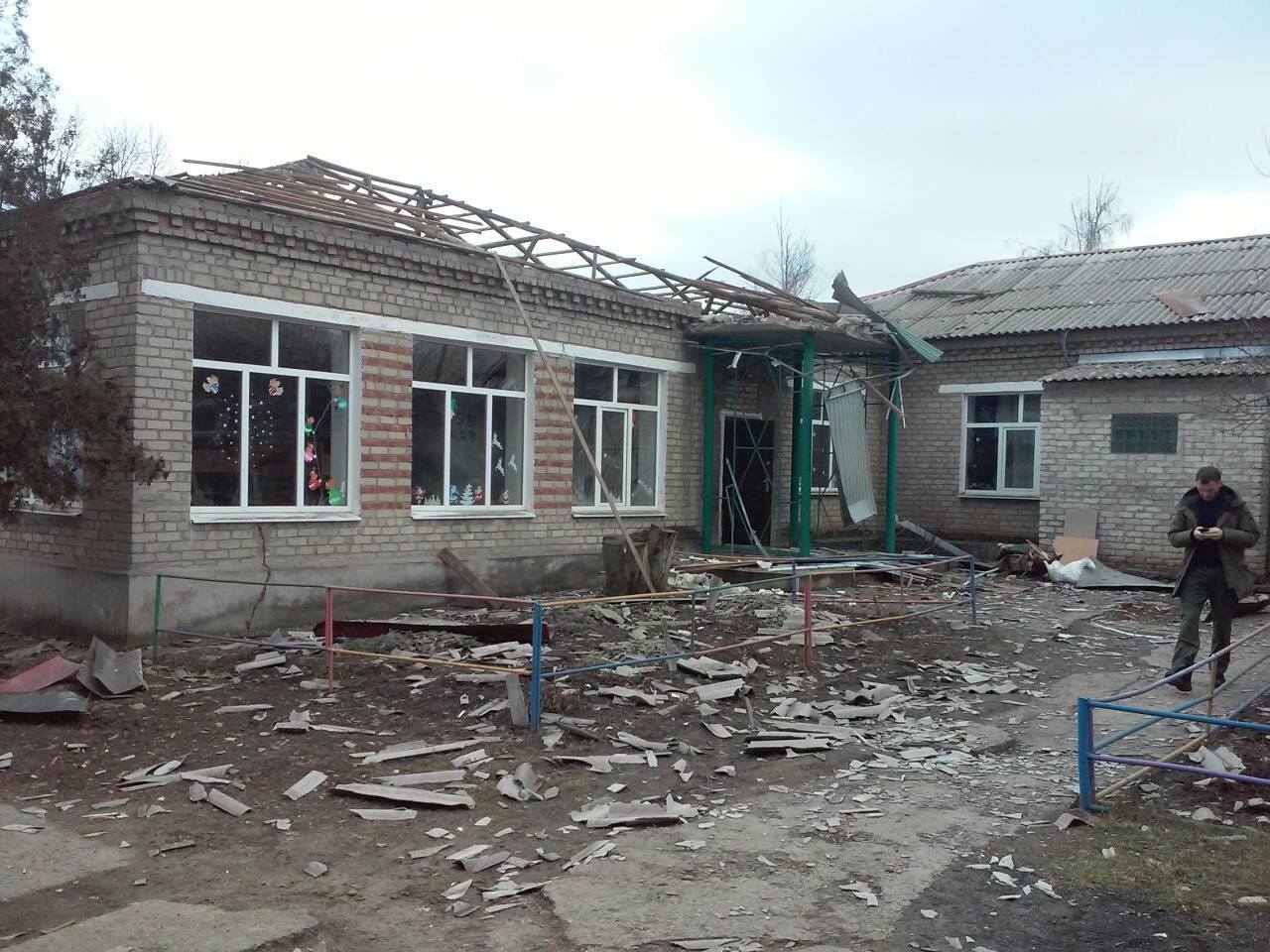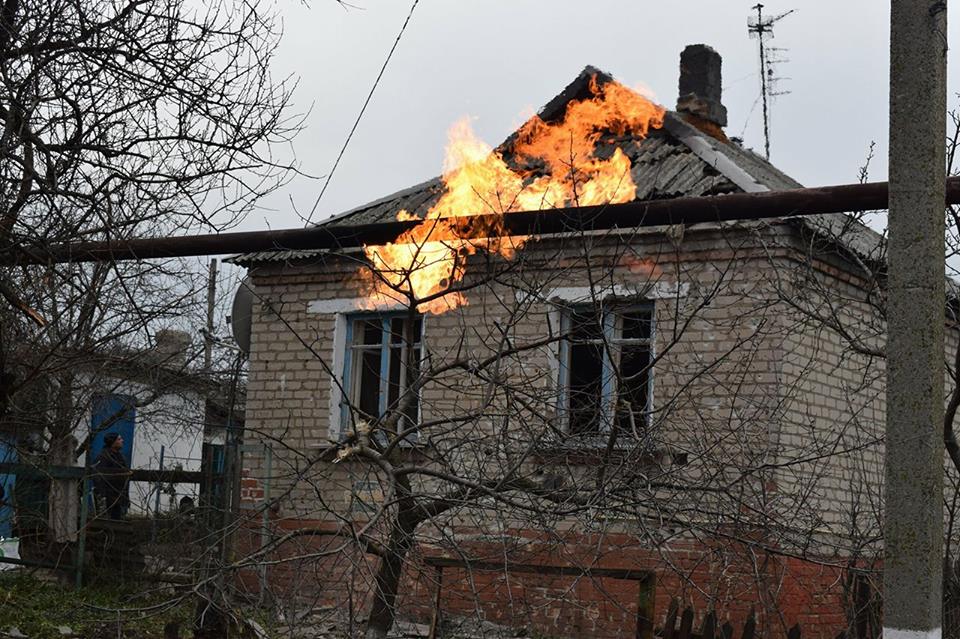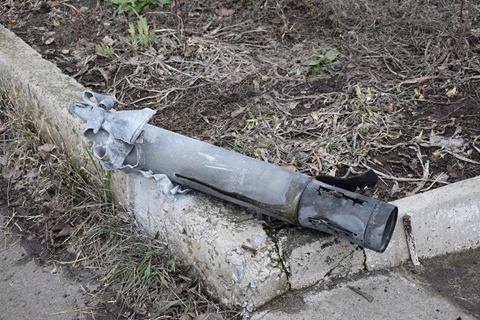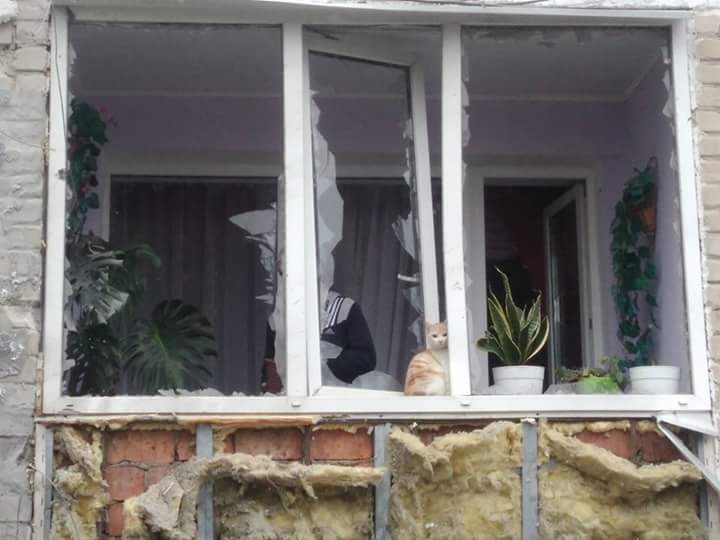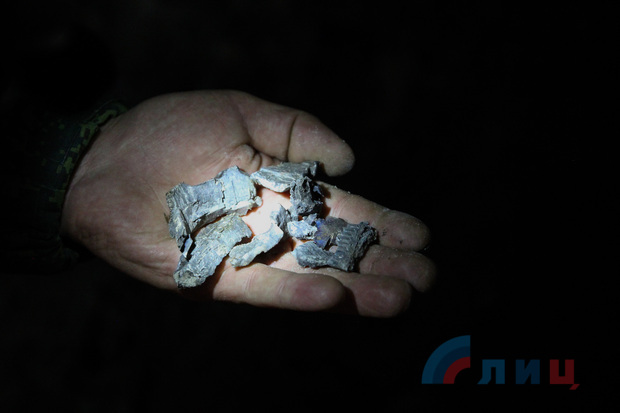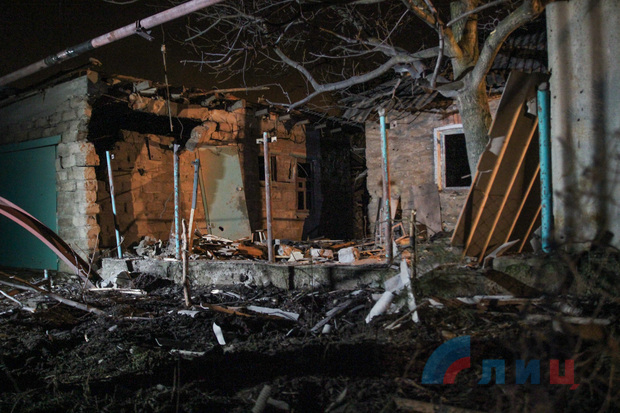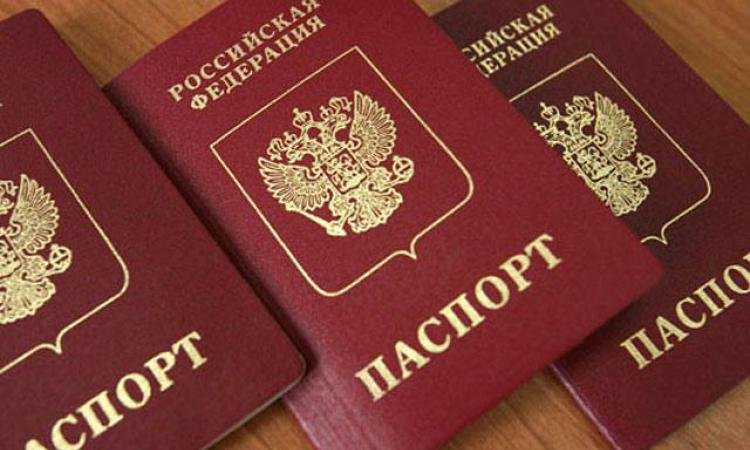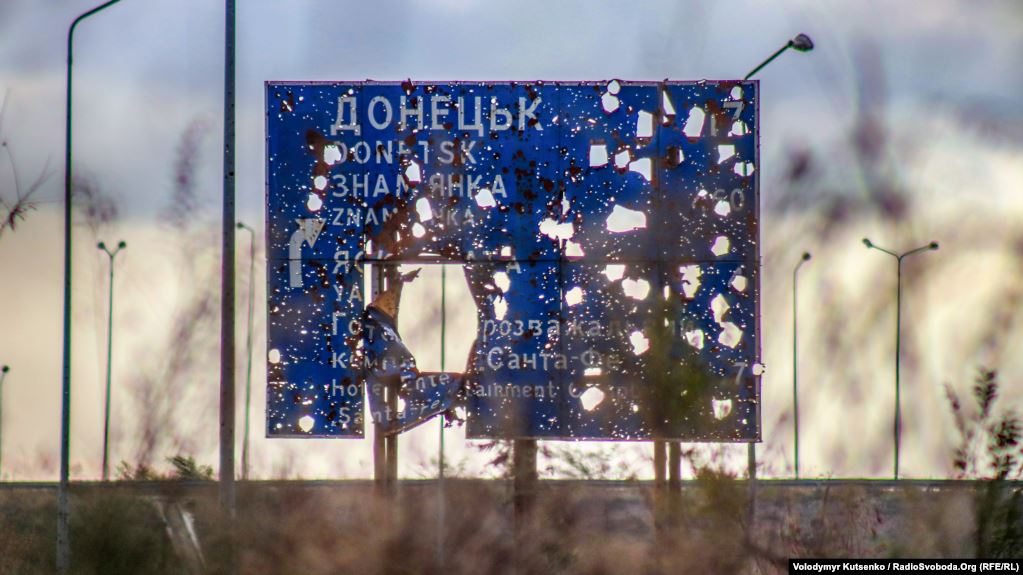Russia's pullout from ceasefire monitoring team
The Joint Control and Coordination Center (JCCC) for the issues of ceasefire and stabilization of the delimitation line was created in September 2014 in the East-Ukrainian town of Soledar in Donetsk Oblast, to control adhering to the Minsk Protocol, a ceasefire agreement signed by the representatives of the Trilateral Contact Group (TCG), including envoys of Ukraine and Russia under the auspices of the OSCE.
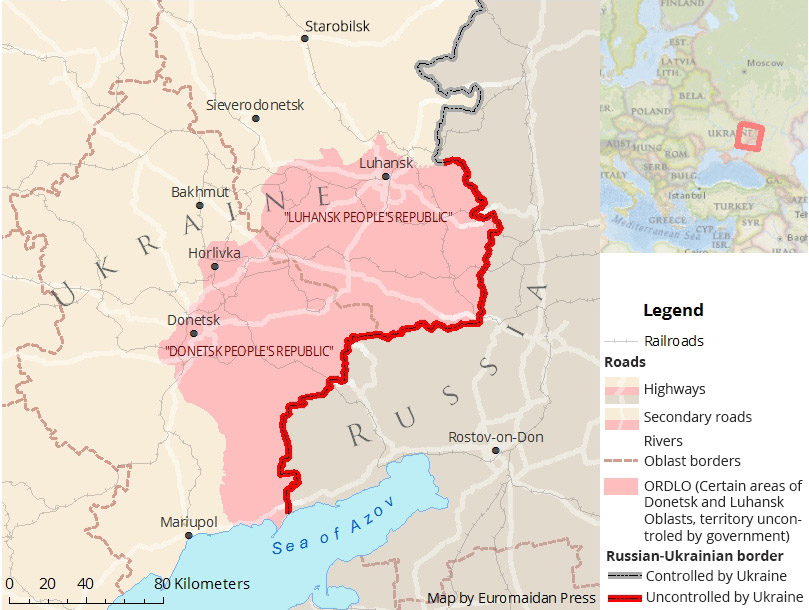
Representatives of the Russian-installed authorities of so-called Luhansk and Donetsk People's Republics ("LNR" and "DNR") have been represented in the TCG but have never been included in the JCCC, which initially consisted of 27 Ukrainian and 18 Russian military servicemen. Later the total number of JCCC members was raised to 128 officers, which were divided into 16 joint control groups, eight groups for controlling the ceasefire in the parts of Donbas uncontrolled by the Ukrainian government (four for the "LNR" and "DNR" each), and eight more in the Donbas region under control of the Ukrainian government.
Despite its limited influence, the JCCC has been a bilateral channel to negotiate local truces to provide the possibility for workers to repair damaged infrastructure, to aid civilians, to allow the belligerents to evacuate the wounded and dead.
On 18 December 2017, the Russian Foreign Ministry announced the pullout of all its 75 military observers from a joint group monitoring the truce in eastern Ukraine. The ministry provided vague explanations for this measure such as "the Ukrainian side has deliberately created a tense moral and psychological situation for the Russian service personnel involved in the center’s work and has hampered the execution of their official duties."
https://www.facebook.com/MIDRussia/photos/a.265191980246917.43849.264205757012206/1206611079438331/?type=3
The Ukrainian military denied the Russian allegations.
Both unrecognized republics declared that their representatives replaced the withdrawn Russians in the JCCC. The OSCE SMM confirmed they couldn't reach the Russian representatives by phone on 18 December:
The SMM called JCCC duty phones in “DNR”-controlled Oleksandrivka (20km south-west of Donetsk) and Yasynuvata on 18 December and found that they were answered by persons who introduced themselves as “ministry of emergency situations” members. The duty phone in “DNR”-controlled Debaltseve (58km north-east of Donetsk) was answered by someone introducing himself as an “LNR” member of a “contact group.”
On 19 December the Russian observers were withdrawn from the Ukrainian territory, their Ukrainian counterparts returned to Soledar from the occupied territory.
US Special Representative for Ukraine Negotiations Kurt Volker noted that Russia had recalled its officers from the JCCC right before a massive escalation in the Donbas:
Russia withdrew its officers from JCCC - a ceasefire implementation tool - right before a massive escalation in ceasefire violations. Ukraine just suffered some of the worst fighting since February, 2017. Decision for peace lies with Russia.
— (Archived) U.S. Special Representative for Ukraine (@SpecRepUkraine) December 19, 2017
US Mission to OSCE’s Charge d’Affaires Harry Kamien said on 21 December in Vienna:
"The conclusion drawn from this action is clear: the Russian Federation seeks to absolve itself of the incendiary role it plays in the Ukrainian conflict. By unilaterally withdrawing from the JCCC, Russia effectively renders it ineffective and exposes civilians and our SMM monitors to increased danger."
Another escalation in the Donbas
Agreed in late summer by the Minsk Group (TCG) starting from the 1st of September, the so-called back-to-school ceasefire had significantly de-escalated hostilities until mid-December. The fire attacks still occurred in the fall, however, heavy arms weren't used often and the total number of the attacks remained pretty low compared to August.
On 18 December about 17:00 EET, residential areas of the rural settlement of Novoluhanske was attacked with the multiple launch-rocket system BM-21 Grad from the direction of occupied Horlivka.
Police said that eight civilians were injured in the shelling, six women and one child among them; 104 houses (every fifth house in the settlemtn) were damaged, the explosions set five houses ablaze. A school, a kindergarten and a local medic facility also came under attack.
Read also: Russian-hybrid forces kill four civilians in Donbas amid Eurovision grand final
The civil volunteers reported that the attack took place during the St. Nicolas Day's concert for children. Luckily, no rockets hit the community center:
19:05 #Novoluhanske: Before the Grad strike, performers from Vinnytsia started a concert in the community center for St.Nicolas Day, all came to the concert hall. It emerged to be the deliverance. Nobody of show-goers was affected [by the attack] https://t.co/4zfQ4NmYiq
— English Luhansk (@loogunda) December 18, 2017
Later on the same day, about 19:30, the residential areas of the "LNR"-controlled cities of Kadiivka (formerly Stakhanov) came under shelling. As many times before, the "LNR" claimed that the attack was conducted by Ukrainian siloviki (security and military services) using artillery. Reportedly, an old woman died due to heart attack, three more civilians were wounded in Kadiivka, one more local resident was wounded in nearby Pervomaisk.
The monitors from the OSCE SMM assessed a few craters in Kadiivka as caused by 122mm artillery rounds fired from a north-westerly direction.
Microdistrict Pivdennyi in Kadiivka was hit the most. It is at least 13 km away from the nearest Ukrainian position in Troitske situated west. Northwest, Ukrainian positions are situated even further, in Novooleksandrivka about 16 km away from Pivdennyi. A D-30 122mm howitzer could hit a target about 16 km away on the edge of its effective firing range (15.4 km). However, there are much closer positions of the Russian-hybrid army in Kalynove (about 8 km away) and the fields between Kalynove and Kadiivka.
The spokesman of the so-called "LNR people's militia" (army) Andrey Marochko suggested: "Most probably, it has happened because the JCCC [Russian] representatives have been withdrawn and nobody can record such crimes. Ukrainian Armed Forces and the criminals have taken advantage of the moment and conducted this bombardment," he said.
The Ukrainian General Staff accused Russian-hybrid forces of shelling Kadiivka and other settlements, noting that the attack on Kadiivka was staged to "discredit Ukraine in the eyes of the international community" and to foster "civilian residents' hatred of the temporarily occupied territories" towards Ukraine.
Read also: Russian-hybrid attack on civilians in Krasnohorivka is a form of psychological warfare
Several more settlements from both sides of the contact line were also shelled from 18 to 21 December. For example, the Ukrainian-controlled part of Zaitseve was shelled with MLRS Grad from Horlivka on 19 December.
Christmas ceasefire
On 20 December, the Trilateral Contact Group agreed on another ceasefire in the Donbas starting from 00:00 EET 23 December. Military activity has been mostly suspended in the Donbas since midnight. The Anti-Terrorist Operation Headquarters (ATO HQ) reports
only separate provocations against Ukrainian troops with use of machine guns, light mortars, and grenade launchers, three fire attacks have been recorded as of 18:00 today. A day before, on 23 December, there were 11 "targeted fire attacks on Ukrainian positions" using heavy 120mm mortars and 152mm artillery as of 18:00, according to the ATO HQ.
Local residents living near the frontline also confirm insignificant military activities at the frontline:
16:42 #Marinka, W of Donetsk: [vk] [Only] one ka-boom occurred today and a bit of gunfire. Generally, quiet and calm. https://t.co/kzKgZqwZgw
— English Luhansk (@loogunda) December 23, 2017
The US and Canada's green light to the lethal aid can be the reason for the escalation
Ukraine has been asking the US to provide the lethal weapons since the war has erupted in the Donbas in 2014. Since that time, Russia had clamored against US lethal aid for Ukraine as well.
Finally, on 13 December 2017, Canada added Ukraine to the Automatic Firearms Country Control List, which is a list of countries eligible for arms exports, opening the door to the export of Canadian-made weapons and ammunition to Ukraine.
US President Trump approved a $41.5 million deal for Barrett Firearms Manufacturing to sell Model M107A1 sniper rifles, ammunition, and accessories to Ukraine.
On 22 December, the Trump administration also approved a plan to provide Ukraine with "enhanced defensive capabilities" to help it "deter further aggression." The statement did not specify the type of weapons, but CNN and the Associated Press quoted unnamed US officials as saying they would include the American-made Javelin anti-tank missiles.
Kremlin's narrative of expected escalation after the lethal aid
Russian media keep pushing the narrative that providing Ukraine with defensive weapons would escalate hostilities, citing the Russian officials who tell that "the delivery of weapons to a conflict zone doesn’t help peacekeeping efforts, but only worsens the situation," "this decision would be equal to an attempt to add fuel to the fire," and of course "This decision is aimed at undermining the Minsk Agreements and it will also escalate tensions and military activities in southeastern Ukraine. It will definitely not help restore peace in the region."
The same idea has been repeated in Western media. Last August, Charles Kupchan wrote in the Washington Post:
...sending lethal weapons to Ukraine is a recipe for military escalation and transatlantic discord.
Leonid Bershidsky, the former editor of online media Slon.ru and Focus.ua, wrote
in his op-ed on Bloomberg:
It would, however, be reasonable to expect that the rebels will be armed with more modern hardware if US supplies start coming in. That can only make the war, which has already taken 10,000 lives, even deadlier. ...arming Ukraine will likely lead to more bloodshed.
"All in all, the plan to pressure Putin by providing Ukraine lethal arms is strategically flawed. Worse, it could prove reckless," conclude Rajan Menon and William Ruger on ForeignAffairs.com.
In fact, there are no objective reasons for escalating tensions with giving Ukraine the defensive weapons. Taking into account the fact that Russia has already deployed hundreds of tanks, armored personnel carriers, pieces of artillery and other military equipment, the only reason for escalation can be the Russian will to instigate hostilities as retaliation for arming Ukraine.
Read also: Separatists in Donbas have more tanks than Germany, France, and Czech Republic combined
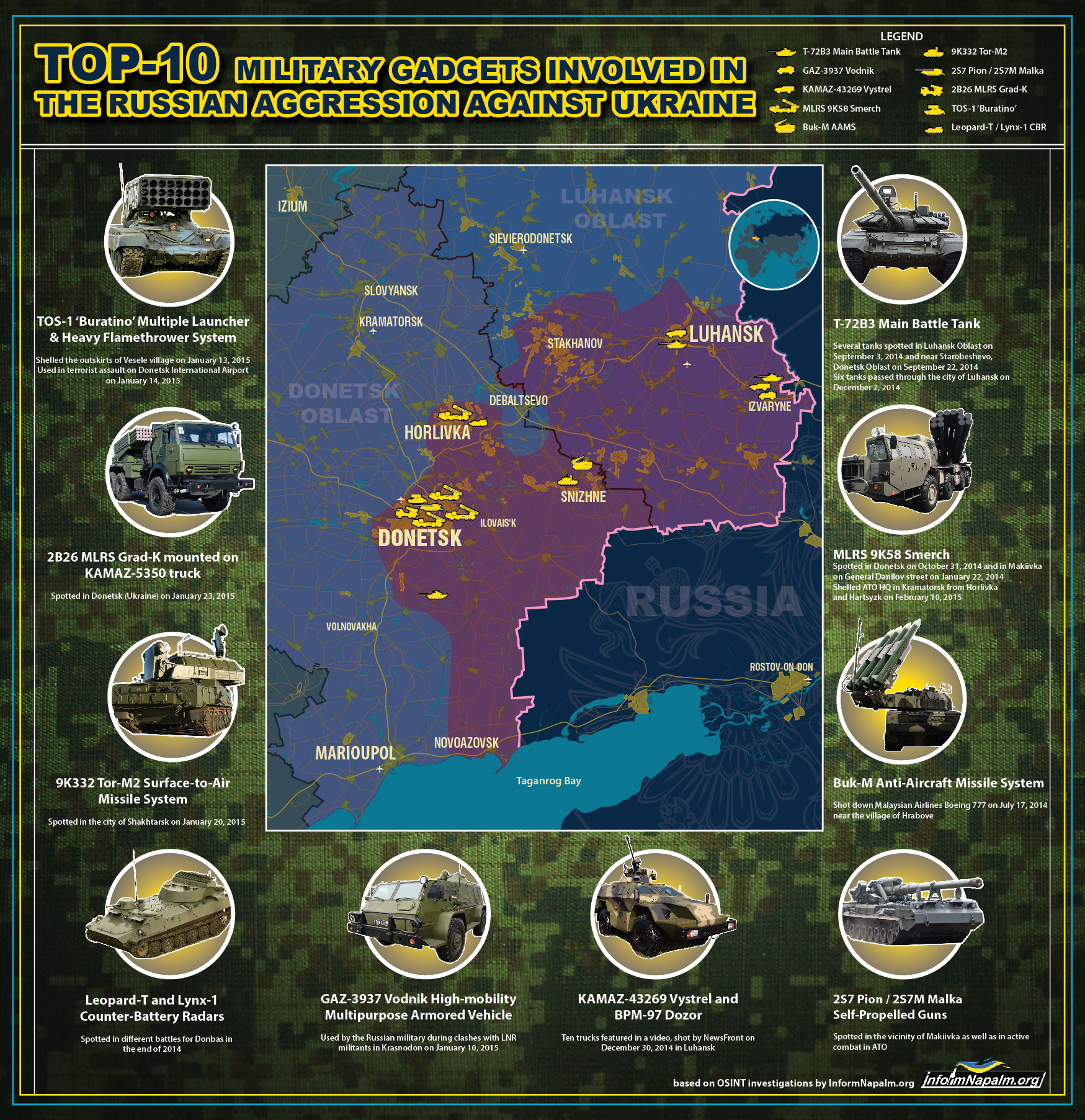
Having the sophisticated anti-tank systems, Ukraine can raise costs of the "blitzkrieg" operations to Russia like recapturing the Ukraine-controlled area east and south of Luhansk from Khryashchuvate to Lutuhyne in 2014 succeeded due to direct invasion of the Russian regular military forces.
Prisoner exchange endangered
Earlier in November, the Trilateral Contact Group on Donbas announced the prisoner exchange of 74 Ukrainian hostages taken by “LNR/DNR” for 306 persons held in Ukrainian prisons.
On the day when Russia announced its pullout from the JCCC, 18 December, MP Iryna Herashchenko, Ukrainian humanitarian representative in the Minsk Group (TCG), told that a Skype conference of the humanitarian subgroup took place to discuss the issues of the prisoner swap. Representatives of the ORDLO ('certain areas of Donetsk and Luhansk Oblasts,' the official designation of the occupied territories) demanded including additional persons to the exchange lists agreed earlier.
Read also: Ukraine may swap its 74 hostages in occupied Donbas before New Year
The Minsk Group confirmed the intentions to swap prisoners before the New Year on its meeting in the Belarusian capital, Minsk on 20 December. Nevertheless, the exact date of the exchange hasn't been agreed by now.
The prisoner exchange process has been blocked by Russia in the Donbas for more than 14 months, since September 2016.
Read more:
- Ukraine may swap its 74 hostages in occupied Donbas before New Year
- After the coup in occupied Luhansk: a real junta and more Russian FSB control
- Ukrainian civil resistance to Russian occupation in Donbas
- Russian proxy “republic” sentences two pro-Ukrainian football fans to 13 & 17 years
- Russian “siloviki” oversee power vertical of occupied Donbas
- Ukraine’s Donbas-reintegration bill branding Russia “aggressor state” passes first reading
- Putin suddenly wants armed peacekeepers in Donbas. Why now? What for?
- The dangerous life of pro-Ukrainian activists in occupied Donbas
- Ukrainian soldiers battle wildfires, along Russian-backed separatists, in war-torn Donbas
- Executed in Donbas: activists present data on 95 extrajudicial killings
- Three years after sham referendums in Donbas, no Russian Spring
- Stages of Russian occupation in a nutshell
- Donetsk separatist referendum organizer: “Return to Ukraine is inevitable, Donbas is Ukraine”
- First casualties of OSCE mission in Donbas: landmine blast kills one, injures another
- Ukrainians welcome visa-free travel to EU amid escalation of hostilities in Donbas
- Policy shift shows Russia preparing to recognize its puppet republics in Donbas
- Ukraine Security Service expells Russian Head of JCCC from Ukraine citing “DNR” ties

